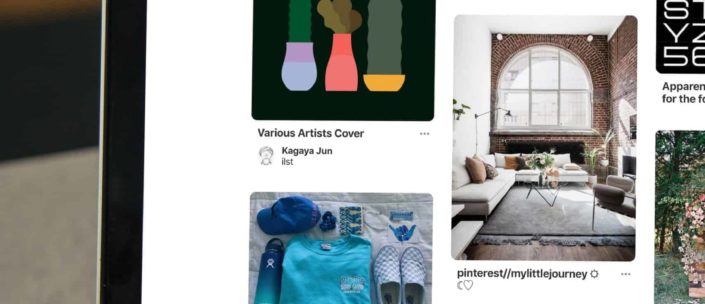Facebook. Twitter. Instagram. These social titans are the bread and butter of digital advertising, but if you don’t have a Pinterest advertising strategy, you’re missing a key player in your social lineup. Since Pinterest is a search engine that doubles as a social media platform, it’s a social powerhouse that you can’t afford to overlook or underutilize.
Whatever your level of marketing experience, it can be incredibly helpful to have a handy overview of the most important Pinterest advertising strategies and tools for building your brand on this powerful platform. For those who are newcomers to marketing on Pinterest or just wanting a refresher course, we at Zen created this simple field guide.
Why Pinterest?
Pinterest drives 7.17 percent of all social media traffic and has more than 250 million monthly users. Ninety-three percent use Pinterest to plan their purchases, 96 percent use Pinterest to conduct product research, and 87 percent attribute their purchase to Pinterest. (Translation: Pinterest users are in the mindset to shop. Unlike other social media platforms, people come to Pinterest primarily for purchase inspiration, which means it’s practically custom-made for e-commerce sites who are looking for greater leverage.)
Pinterest pins are 100 times more spreadable than a tweet, and a pin’s half-life is 1,600x longer than a Facebook post. (Yes, you read that right!) And Pinterest users are well resourced: over half have income of more than $50,000, and more than 10 percent of have income exceeding $125,000.
Pretty impressive, right?
Make SEO mission critical.
Though there are many factors that make Pinterest a successful part of your social strategy, SEO-optimized keyword searches are number one. (Which is why we’ll devote a little extra time to this section). .
Because Pinterest is a search engine, it’s driven by keyword searches to show users the content they’re most interested in. This is where you come in. For your brand to know what your audience is most interested in and to optimize your pins accordingly, it’s imperative that you conduct keyword research.
You can start by simply typing in a term related to your business and taking note of the search results. If you don’t see pins related to your business, you know you haven’t yet hit your mark.
Another way to go is to pay attention to the suggested keywords that Pinterest generates for you and compile a list of them. When you’re ready to launch your ad campaign on Pinterest, enter those keywords and the related keywords will automatically appear.
The three places where it’s most important to include SEO keywords is in your board descriptions, pin content, and especially in your name. Whenever you attach your name to a pin, you also want to include a keyword (or several) referencing your business, product, or specialty in some way, like, “Digital Marketing Firm, Zen Media, Experiential Marketing.” That way, when a user searches Pinterest for these terms, our profile appears in the results.
Take aim at your audience
Pinterest lets you save demographic profiles (“audiences”) to your account to help you take accurate aim at users based on their interests. Though you can also control audience parameters like location, age and gender, interest-specific approaches will almost always give your pins the most traction.
Say your target is a 30-35-year-old young professional on the west coast who’s looking for bespoke bedroom furniture. Pinterest lets you create a demographic profile for just this sort of person so you can target the ideal customer for your products.
Mix things up with a variety of ads and campaigns
Pinterest advertising strategy helps you promote your brand with a variety of ad options, and the more you can mix things up, the more reach you can expect. Pinterest’s ad options include:
- Promoted pins. These are super easy to set up and connect your brand to a particular pin with the words, “Promoted by,” followed by your business’ name.
- Video pins. Video pins look exactly like photograph pins until a user scrolls over them, at which point they automatically begin to play. Video packs a powerful punch because viewers are 2.7 more likely to purchase a product if they’ve viewed it in this format.
- One-tap pins. These take a user straight to your website.
- Promoted app pins: These let users download your app directly from Pinterest.
- Cinematic pins: These are pins that animate as user scroll over them.
When you go to create a new ad, you’ll notice that Pinterest offers five different campaign strategies:
- Build brand awareness
- Boost engagement with your pins
- Get traffic to your website
- Increase installs for your app
- Build brand awareness through video
More often than not, you’ll be wanting to drive traffic to your website where users can land on your product pages or blog. Whatever your marketing goals, choosing the corresponding campaign strategy will it make it that much easier to meet them.
Make your pins as useful as they are eye-catching.
To compete with the smorgasbord of visual imagery on Pinterest it’s critical that your graphics stand out, but a pretty pin is hardly enough. For your ads to capture users’ interest and attention they need to feature large, easy-to-read titles with non-fussy fonts. Graphics need to be both eye-catching and unambiguously related to your brand, as well as include verbal cueing. (Such as what to expect when visiting your site. For example, 20 percent off their first purchase.)
As far as layout goes, think vertical. Even though Pinterest can handle almost any visual format, square ones don’t perform as well because the site is configured to favor vertical or “portrait” images. And though graphics should be at least 735px wide for optimal viewing, there’s lots of wiggle room with length. (And this is great for infographics, which perform exceptionally well on Pinterest.)
Be social on social.
By definition, to be “social” means to interact and to be directly engaged in building relationships of trust. On Pinterest, there are lots of powerful ways for your brand to do this.
Social is about a two-way relationship, so when your followers speak to you, for goodness sakes, speak back! Answer their questions, respond to their comments on your pins and comment on theirs.
Take advantage of Pinterest’s Open Board feature and invite followers to contribute their own pins. Open boards are great for heightening involvement and building a sense of community around your brand. You don’t need to worry about followers pinning your board with content that’s off-brand or that you simply don’t approve of. Since you’re the creator of the board, you control the access to it (it’s by invite only), and you have opportunity to review and preapprove follower’s pins.
Reach out to influencers.
If there are influencers you have your eye on to help build your brand then you’ll want to practice the golden rule and do for them what you hope they’ll do for you. That means following their boards, repinning their pins, and offering meaningful engagement.
Once you’ve earned enough social capital with your prospect you can initiate the next step toward a win-win collaboration. Offer to contribute to one of their boards and ask if they’d mind contributing to yours. Propose ideas that demonstrate your understanding of their brand and the kind of content that will best promote it and you’ll be well on your way to a generative partnership.
Learn from the best.
Start following the most popular boards that are relevant to your industry to learn from the high-powered performers. Study their boards closely and try to identify what’s differentiating them from boards with average numbers of followers. Play close attention to both the quantity and quality of the brand’s engagement with their followers and use this intel to inform your own efforts. Also, keep in mind that commenting on popular boards that relate to your industry can be a way to build awareness of your own brand.
Pinterest Analytics
Analytics is a crucial piece of any sound marketing strategy, and luckily, Pinterest has you covered. Pinterest Analytics provides metrics about those engaging with your brand and lets you track which of your pins and boards are most popular, what content from your social channels and website is being saved, how much traffic your site gets, and even which devices your followers prefer to pin from.
Minding these metrics can give you the data you need to continually calibrate your Pinterest advertising strategy to ensure you’re driving as much traffic as possible to your site.
Summing up.
So there you have it, a field guide to the most important strategies and tools to build your brand on what might be social’s most overlooked and underutilized powerhouse. With 250 million monthly users flocking to its utility-meets-inspiration approach, isn’t it time your brand made Pinterest a key player in its social lineup?







